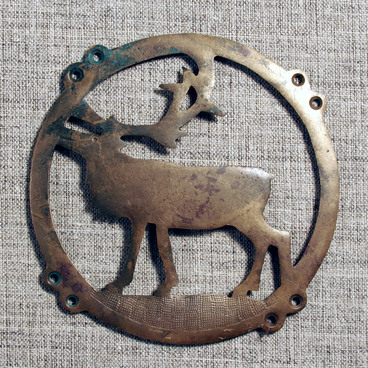The Forest Nenets inhabit the Western Siberia, the territory with harsh climate, so warm and windproof clothing adapted for nomadic way of life is simply necessary. The Nenets make it out of processed reindeer skins. Depending on the age of an animal, its skin is used for different types of outfit and footwear. The Northerners also use reindeer fur as its thermal properties are excellent.
It is specifically a woman’s duty to provide the whole family with clothes. The Nenets men wear malitsa coats in winter, women wear yagushka coats. Reindeer skins currying technology for making traditional clothing has been mastered for centuries, it is a complicated and arduous task. Usually it’s done in summer, when it’s easy to dry skins putting them in the open air outside a chum. To process a skin for fur, one scrubs only subcutaneous tissue out of the inner side and to make leather or suede, the outer layer with fur is also cleaned. After initial preparation the skin is placed on special wooden boards for processing. A woman sits on a wooden log, the board with the skin set in front of her so that its narrow end comes down to the ground. With her two hands she takes a scraper with a broad blade and scrubs out the subcutaneous layer with powerful movements from center to the edges. At the same time the material is being mashed and stretched. Then the edges are thoroughly curried.
As a rule, it takes a day to process one skin. A scraper looks like a S-shaped piece of iron with a wooden handle inserted across it. While working, one takes the both sides of this handle. One end of the scraper is obtuse, the other one is sharper. A skin is processed with an obtuse end two or three times. When finishing, the scraper blade is always kept sharp. While processing big reindeer skins, they use big scrapers; for currying a kamus, reindeer leg skin, smaller scrapers are used.
Gubkinsky Museum of the Development of the North displays scrapers for skin processing provided by Yenasyata Pyak, a Rychi-Yakha camp resident.
It is specifically a woman’s duty to provide the whole family with clothes. The Nenets men wear malitsa coats in winter, women wear yagushka coats. Reindeer skins currying technology for making traditional clothing has been mastered for centuries, it is a complicated and arduous task. Usually it’s done in summer, when it’s easy to dry skins putting them in the open air outside a chum. To process a skin for fur, one scrubs only subcutaneous tissue out of the inner side and to make leather or suede, the outer layer with fur is also cleaned. After initial preparation the skin is placed on special wooden boards for processing. A woman sits on a wooden log, the board with the skin set in front of her so that its narrow end comes down to the ground. With her two hands she takes a scraper with a broad blade and scrubs out the subcutaneous layer with powerful movements from center to the edges. At the same time the material is being mashed and stretched. Then the edges are thoroughly curried.
As a rule, it takes a day to process one skin. A scraper looks like a S-shaped piece of iron with a wooden handle inserted across it. While working, one takes the both sides of this handle. One end of the scraper is obtuse, the other one is sharper. A skin is processed with an obtuse end two or three times. When finishing, the scraper blade is always kept sharp. While processing big reindeer skins, they use big scrapers; for currying a kamus, reindeer leg skin, smaller scrapers are used.
Gubkinsky Museum of the Development of the North displays scrapers for skin processing provided by Yenasyata Pyak, a Rychi-Yakha camp resident.




